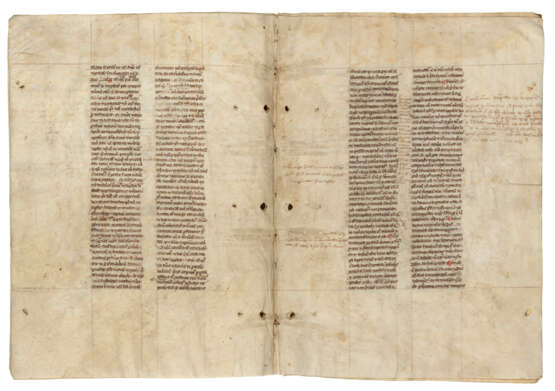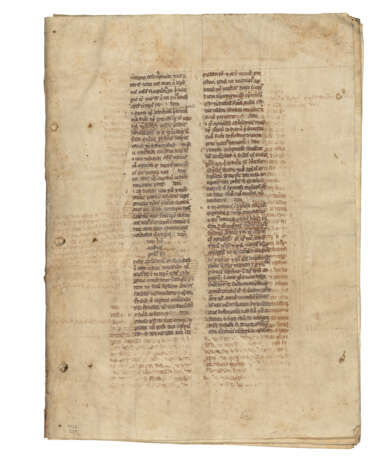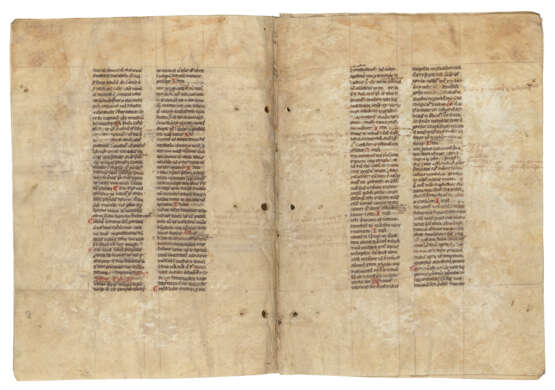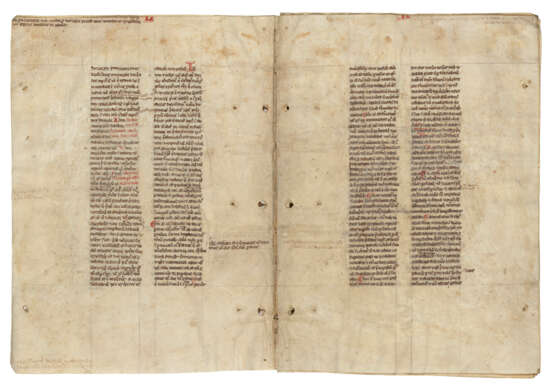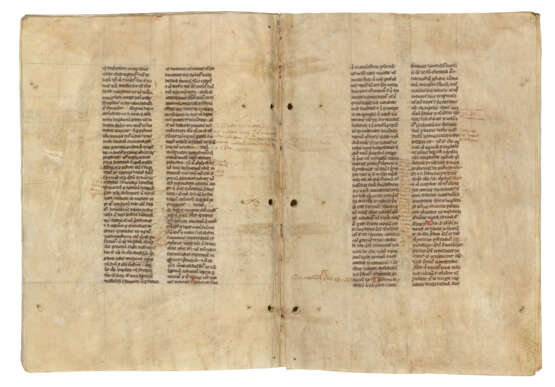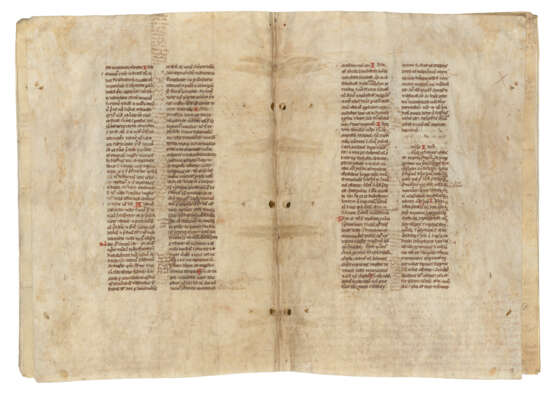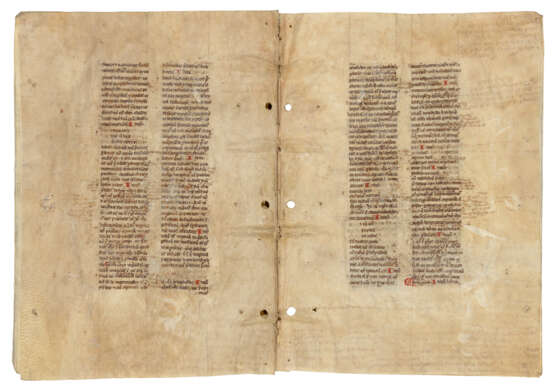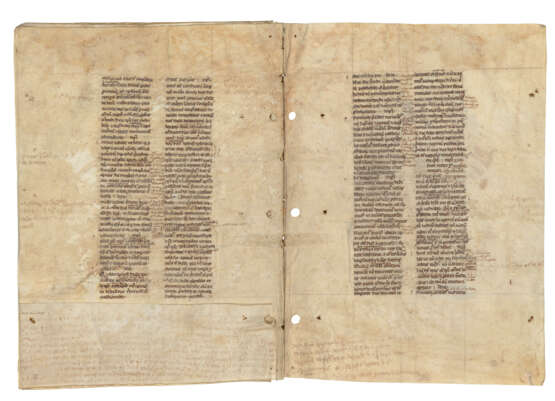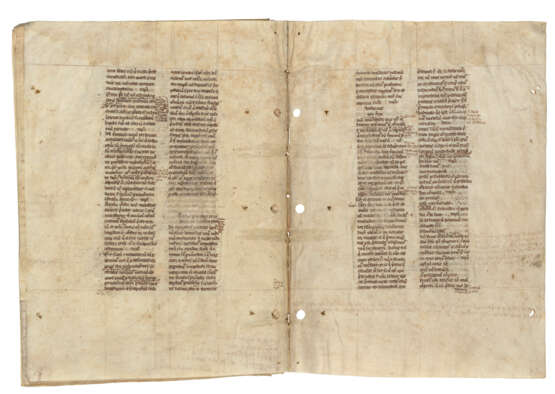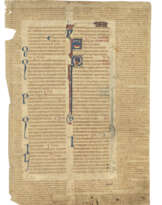ID 869495
Lot 88 | Justinian I (482-565)
Estimate value
£ 2 000 – 3 000
Two gatherings from the Codex Justinianus, in Latin, manuscript on vellum [Italy, c.1300].
Two substantial fragments of two separate early 14th-century Italian copies of one of the foundational texts of the Western legal tradition.
Two gatherings of 12 leaves each, but from different manuscripts, 24 leaves in total, foliation in pencil 1-24; the first gathering 289 x 213mm, 40 lines in two columns, blind-ruled, the text C.J.2.53.1 - 3.24.3pr: ‘[...] integro defensionibus tuis utaris’ to ‘libellensibus sollemnia implentibus’, heavily glossed in at least two early medieval hands, a manicule on f.5, rubrics, initials, headers and paraphs in red; the second gathering 294 x 212mm, 53 lines in two columns, blind-ruled, the text C.J.6.22.8pr - 6.37.23pr ‘[...]quicquam ambiguitatis pariat’ to ‘cornelianum vel alium quendam [...], a few early medieval glosses and annotations, manicules and faces on f.14 (the leaves hole-punched, creased and soiled with some fading to text, the glosses in the first gathering almost illegible, lower margin of f.9 cropped).
Provenance:
Colker MS 229; acquired in 1974 from Maggs.
Early in his reign, the Emperor Justinian I asked jurists to create a new compilation of Roman law, collecting and harmonising the imperial constitutions that had been issued since the second century. Promulgated in 529 and revised in 534, the Codex Justinianus became the foundation of the larger Corpus iuris civilis. In the Middle Ages this compilation became the basis for the study of Roman law and also influenced the canon law of the Catholic Church.
| Place of origin: | Italy |
|---|---|
| Auction house category: | Medieval & renaissance manuscripts |
| Place of origin: | Italy |
|---|---|
| Auction house category: | Medieval & renaissance manuscripts |
| Address of auction |
CHRISTIE'S 8 King Street, St. James's SW1Y 6QT London United Kingdom | |
|---|---|---|
| Preview |
| |
| Phone | +44 (0)20 7839 9060 | |
| Buyer Premium | see on Website | |
| Conditions of purchase | Conditions of purchase |
